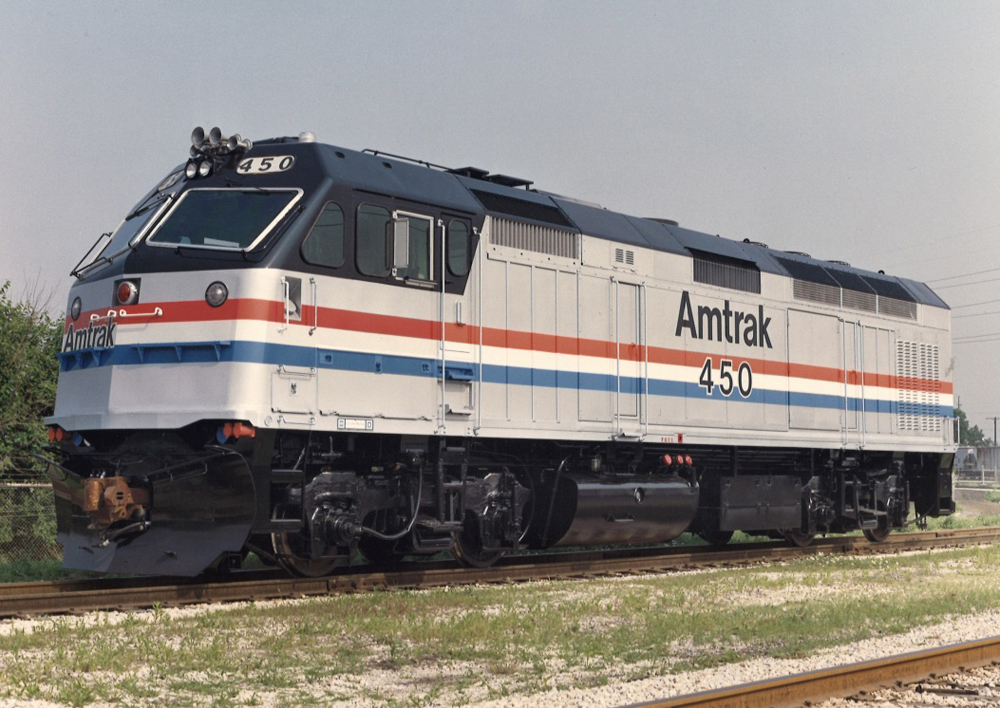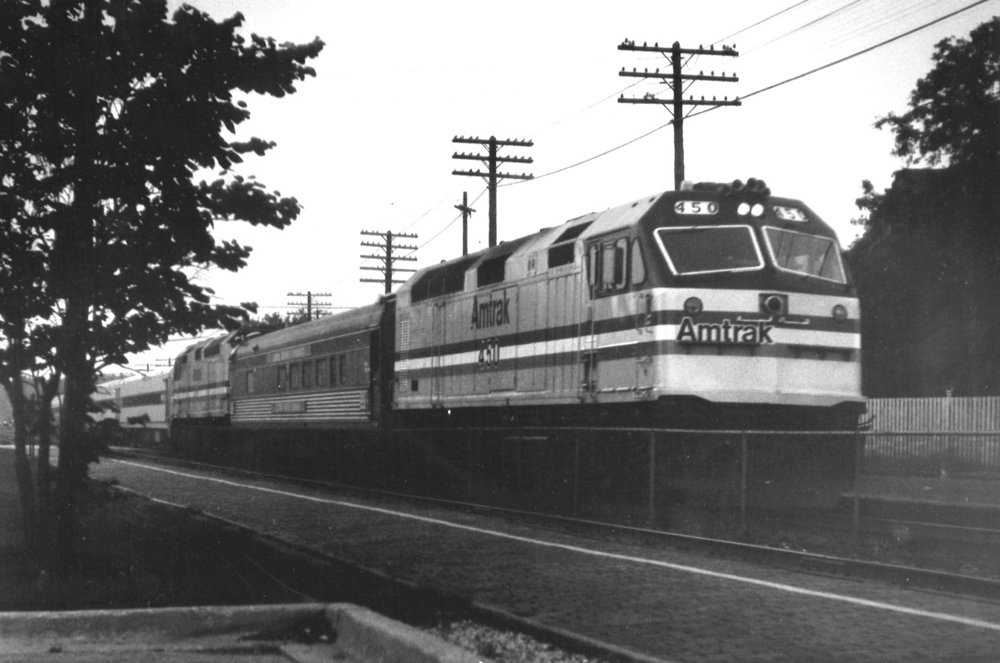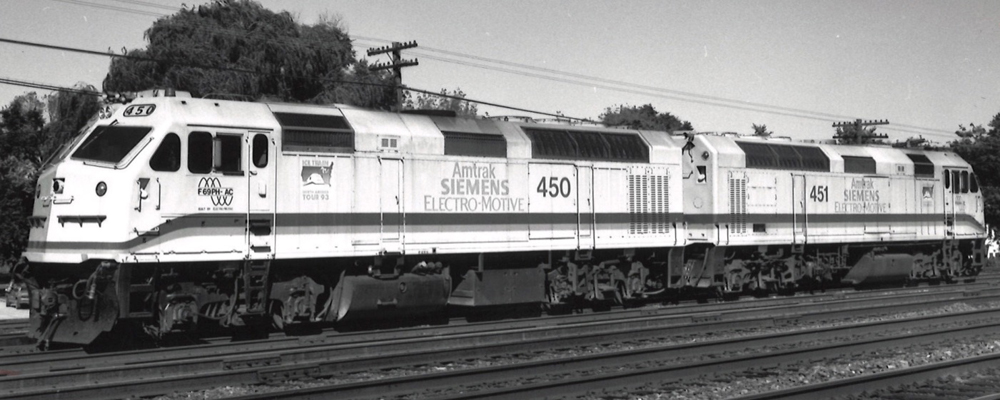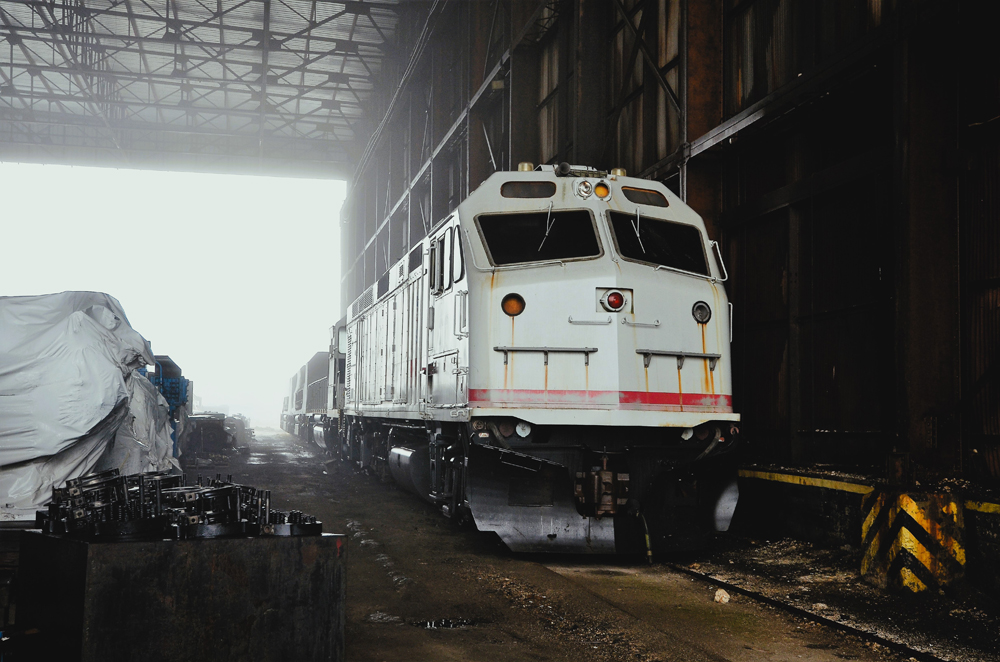EMD F69PHAC

Locomotive builder EMD entered into an agreement with Siemens in 1989 to create the F69PHAC, an experimental four-axle alternating current passenger locomotive for the sole purpose of seeing how such a beast would work.
Outwardly the locomotives strongly resemble a standard EMD F40 then found on passenger trains throughout the country except for an almost non-existent pug nose required to create space of the extra equipment the technology required. Inwardly they were entirely different beasts that were never intended to be the prototypes of a mass-produced design. Only two units were built. (The pug-nosed profile would subsequently become more familiar as the distinguishing feature of the F40PHM units built for Chicago commuter operator Metra in 1991-92. Metra’s 30 units, nicknamed “Winnebagos” by railfans, were the only F40PHMs ever built.)

Numbered 450 and 451, just above the last Amtrak F40, the F69s initially were operated by the United States Department of Transportation, and after working out a few initial bugs, were loaned to Amtrak for a real-world experience.
After being tested at the AAR’s Transportation Technology Center near Pueblo, Colo., the first Amtrak revenue run for the F69s was from La Junta, Colo., to Chicago, leading the eastbound Southwest Chief on Labor Day in 1990.
Considered cutting-edge technology at the time, they worked well. The caveat was the locomotives were just too expensive for mass production, especially since the F40s were working well in daily service.

Sporting a Phase III Amtrak paint scheme, the pair eventually returned to EMD, got a coat of white paint with red striping, and were used to power the German ICE (Inter City Express) train demonstrator set that was on loan to Amtrak in the early 1990s. The train operated primarily on the Northeast Corridor.
Internally the train had instrumented wheel sets on the passenger car immediately behind the locomotives to provide instantaneous data to the company engineers. After the Northeast Corridor testing, the units again wound back at EMD. With the consortium having gathered all the information it felt it could get, they were finally retired, still sporting their white paint.
Instead of becoming razor blades, both locomotives eventually wound up in the hands of National Railway Equipment in Mount Vernon, Ill., where they sat for years. At last report, they are still residing at NRE.















I always liked the sloping nose, gives a better impression of speed, of a fast passenger locomotive 🙂
Interesting….especially in that freight railroads have embraced AC traction, but passenger roads…less so…yes…
Please do not neglect to mention Amtrak 202, another AC traction test bed in the late 1980s.